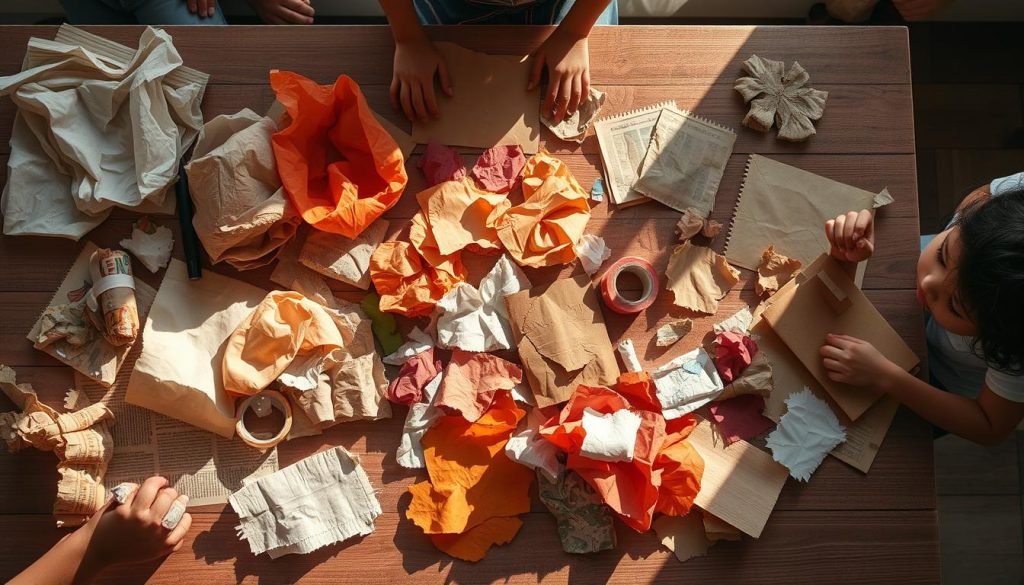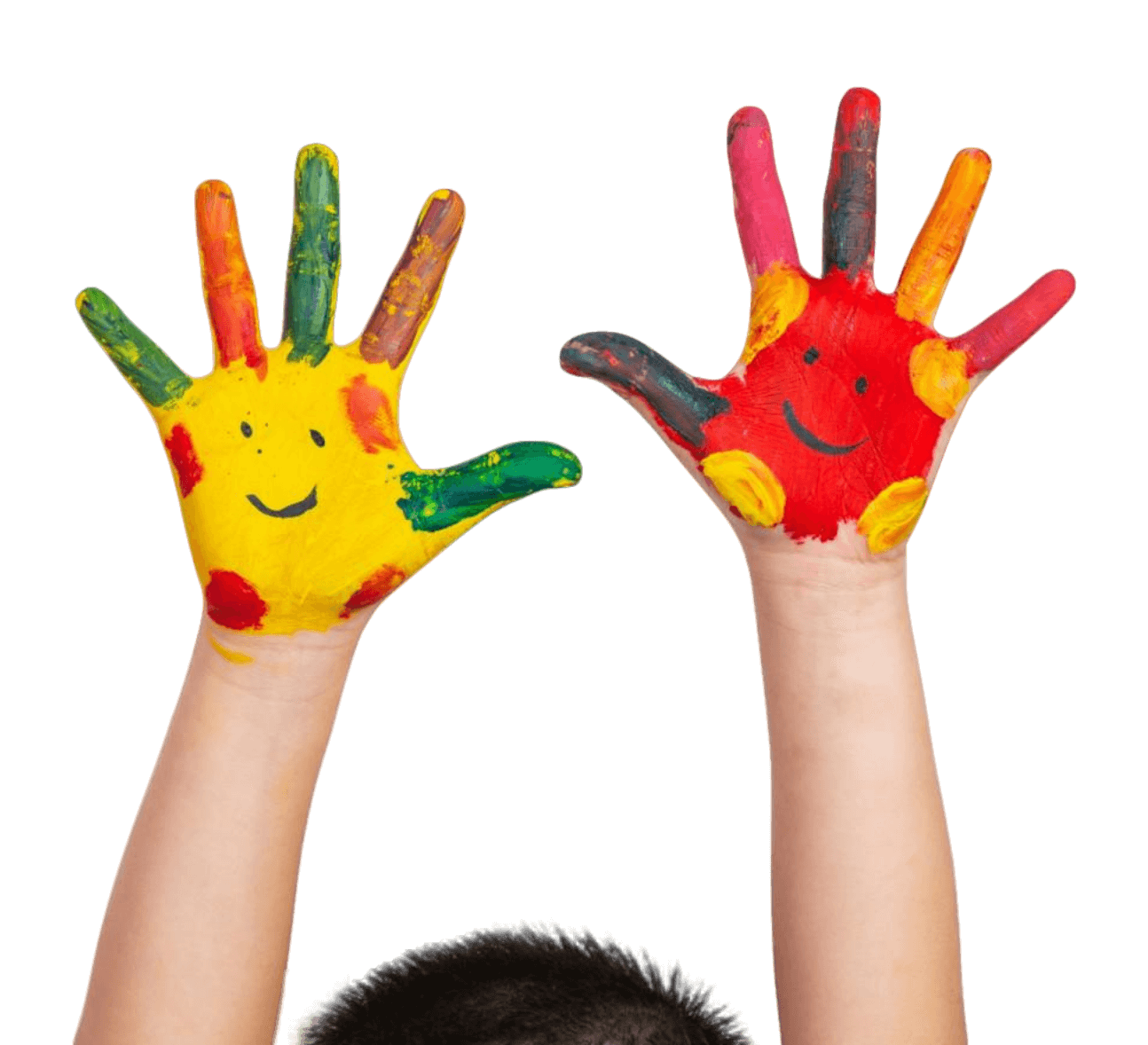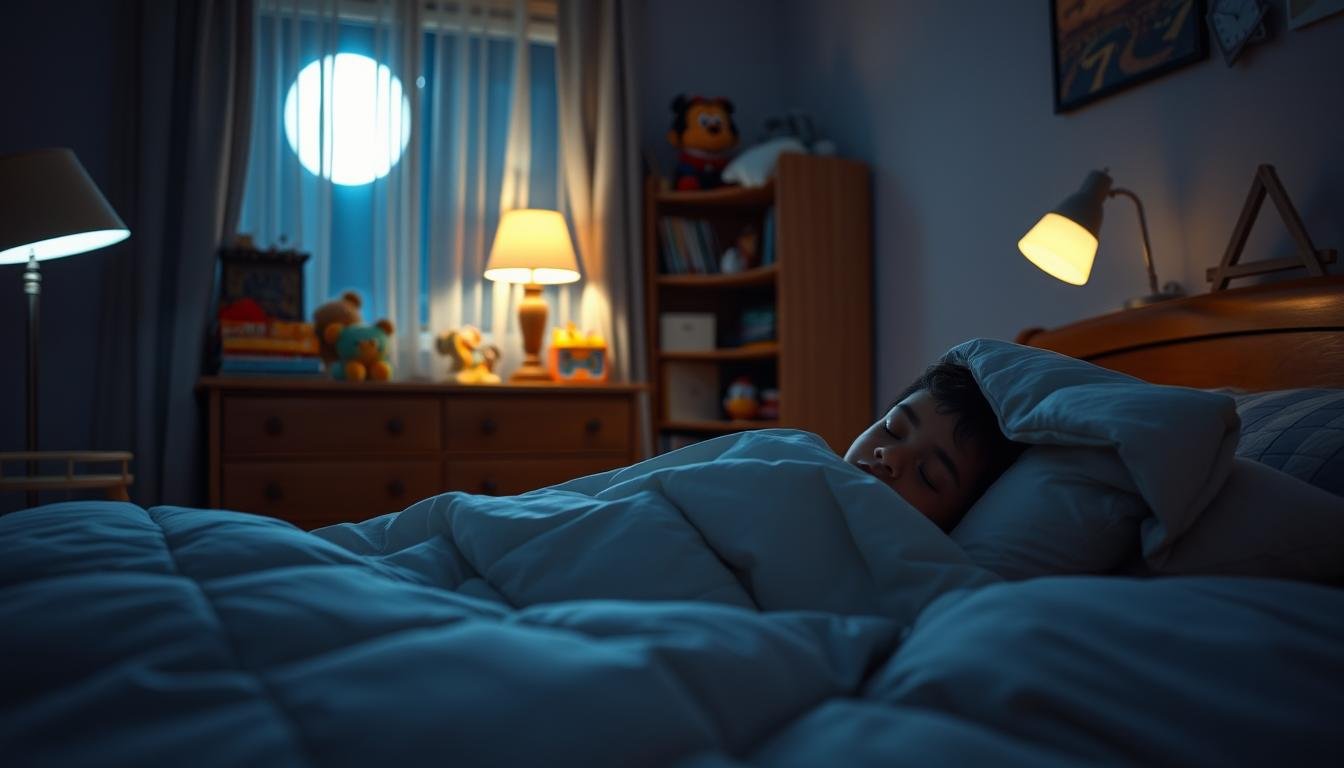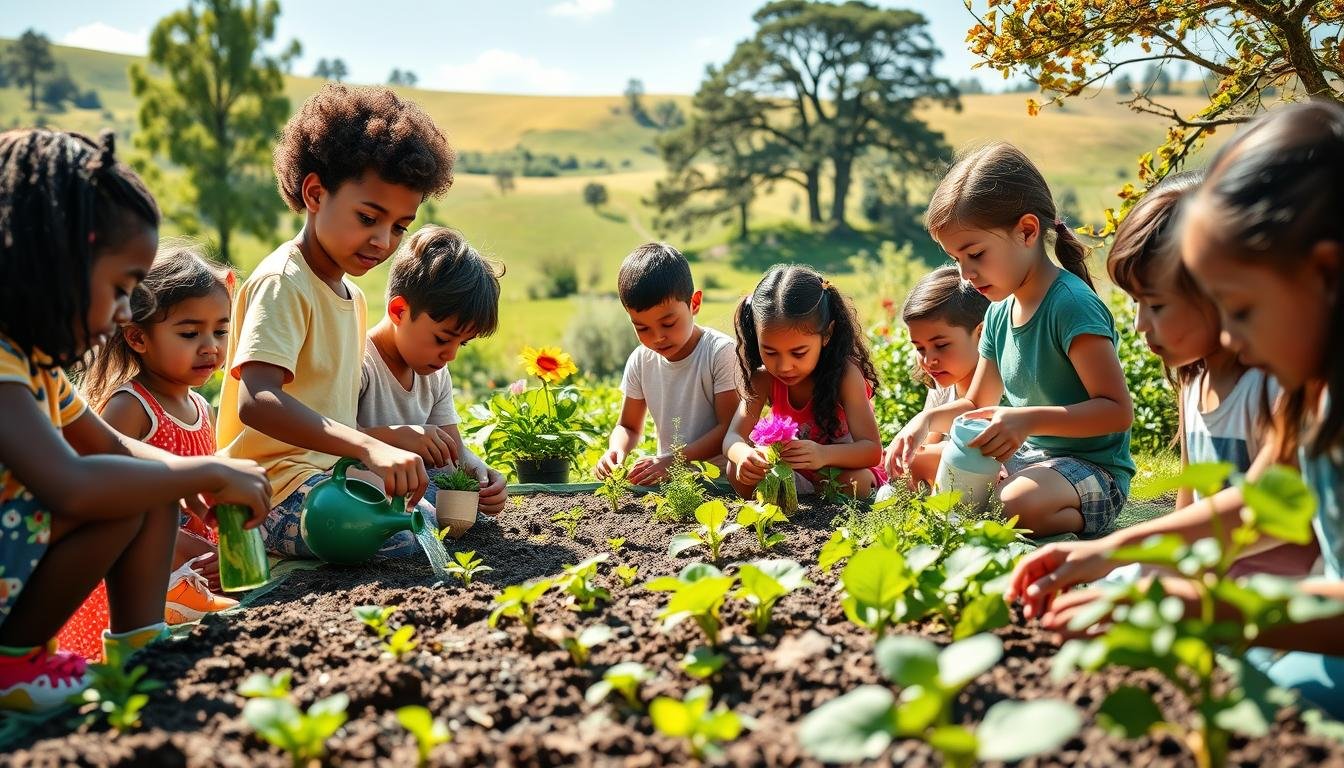Have you thought about how doodling helps prepare your child’s fingers? It’s for more than just future confident handshakes or beautiful cursive. Fine motor skill development is hidden in the fun mess of kids’ art projects. We’ll show you 9 fun activities that also prepare your child for learning and independence.
Research shows fine motor skills make your child’s hands better at exploring the world. It boosts their academic success and self-confidence. Creative activities keep their busy hands engaged. From playing with dough to threading beads, every activity helps them learn important skills. These skills are key for things like tying shoes or writing well.
Choosing the right art projects helps us support our kids’ growth. We create spaces for them to explore and learn. Every cut of paper and stroke of paint helps them get better at controlling their muscles. These small muscles will have a big impact one day. Let’s look at how creative activities are more than just fun. They help shape our children’s future in every colorful moment.
The Importance of Fine Motor Skills in Early Childhood Development
It’s key for parents and caregivers to understand the big role of fine motor skills in childhood development. These skills let kids do tasks like buttoning shirts, tying shoelaces, and holding pencils right. Learning these tasks helps children take care of themselves and gets them ready for school, especially for writing.
One key skill is the pincer grip, where kids use their thumb and forefinger to pick up tiny things like coins. This grip is super important because it helps kids learn how to hold a pencil correctly. If kids work on improving this grip through fun activities, they’ll get better at lots of different tasks.
Noticing if a child struggles with coloring, cutting, or writing is important. These issues might mean they need extra help with their fine motor skills. Pediatric occupational therapy can give kids special help to improve these skills quickly.
Parents can help their kids get better at these skills with some fun activities:
- Using tweezers or chopsticks to pick up small items
- Finger painting to improve how their hands and eyes work together
- Playing with play dough to make hand muscles stronger
These activities don’t just help with motor skills. They also boost kids’ thinking and creativity. This is a big part of growing up well-rounded. Keeping an eye out for key growth milestones and adding simple exercises to the daily routine can greatly improve a child’s motor and thinking skills. This prepares them for school and everyday tasks ahead.
Sticker Fun: An Easy Start to enhancing fine motor skills in kids
Introducing toddlers to stickers is both fun and effective. It’s a simple way to help them develop motor skills. Kids as young as one can start with stickers, under close watch.
Toddlers learn to peel stickers, which helps their fine motor control and eye-hand coordination. Handling small stickers makes the muscles in their hands stronger. These muscles are important for writing, buttoning, and using utensils later on.
Sticker activities also help with cognitive and sensory development. The different textures of stickers interest toddlers, improving their focus and sensory skills. By placing stickers in specific spots, kids learn about space, planning, and basic concepts like shapes and colors.
| Age | Skills Developed | Description of Activity |
|---|---|---|
| 2 Years | Precision Grasp | Children start with simple sticker tasks, learning to place stickers accurately. |
| 5 Years | Letter Formation | Outlining letters with stickers helps kids learn how to write them. |
| General | Hand-Eye Coordination | Sticker activities improve a child’s ability to sync their vision and hand movements. |
Every child grows at their own pace, so sticker activities can be adjusted. Easier tasks like sticker collages are great for beginners. More advanced sticker placement can challenge older toddlers.
Creating a playful learning environment enhances motor skills and prepares kids for school and daily life. Making learning fun with stickers is a great way to start a lifetime of learning.
Exploring Textures: Tearing and Pasting Activities
Kids love simple activities because they’re fun and can teach them a lot. Tearing and pasting paper is not only enjoyable but also helps them develop fine motor skills. These skills are crucial for better hand coordination and sensory understanding.

Tearing paper is more than making a creative mess. It’s a key step in developing hand-eye coordination, which is vital for skills like writing. It helps kids learn how to use both hands together, something they need for many everyday tasks.
It’s also cheap and easy to do with things you have at home, like old magazines. Working with different papers, kids touch and hear varied textures and sounds. Each paper type adds to their learning, making art a rich sensory journey.
- Enhances finger strength and dexterity, essential for gripping writing tools.
- Improves pincer grasp, aiding in the ability to handle smaller objects.
- Can be easily set up and cleaned up, ensuring an engaging activity with minimal preparation or cost.
- Adaptable for thematic learning, using colors and textures suited to seasonal activities or educational themes.
Adding pasting to tearing paper further helps fine-tune kids’ skills in placing items accurately in a collage. This is a great way for them to be creative and improve their precision.
By including these fun yet educational techniques in playtime, we help kids not just with art. We also prepare them for school and daily life. So, let’s change the usual learning ways. Let’s welcome a bit of mess and cheer as our kids learn and grow through art.
Molding Minds: Clay Modeling for Strengthening Hand Muscles
Clay modeling shines as more than just a playdough alternative. It’s a key way to build hand muscles in kids. As they shape, roll, and squeeze clay, they work on important movements. These movements improve their motor skills.
Think of the endless possibilities clay offers. Kids can make anything from simple shapes to detailed figures. Each project helps their muscle strength and skill. It’s also a calming therapeutic art activity, especially for children who need focus.
Studies show that activities like clay modeling are important for kids. They’re not just playing— they’re exercising their hands and minds. Clay is great because it’s both fun and helps build muscle in fingers, hands, and wrists.
Clay modeling helps kids in the long run, too. They get better at hand-eye coordination, which helps in school. It’s important for things like writing and using computers. Both teachers and therapists stress this for kids aged 2 to 6 years.
We know every child is different. Clay is great because it can meet different needs. Kids can work at their own speed, gaining skills while having fun. Adding clay modeling to playtime is both educational and fun.
Dynamic Drawing: Crayon and Chalk Techniques
Guided play is key to your child’s growth. Among these, drawing with crayons and chalk boosts motor skills. These skills include pincer grip development and pressure control practice.
Drawing with crayon and chalk lets kids experiment with colors and textures. Using chalk on sidewalks or blackboards helps them learn about grip angle and pressure. This is great for their motor skills and awareness. Plus, chalk’s texture offers valuable sensory feedback, aiding in cognitive development.
Crayons, especially those shaped for small hands, improve grip strength. These prepare kids for more advanced writing grips. Moving from thick crayons to pencils shows key developmental progress in using different drawing tools.
While using these drawing techniques, kids get many benefits. They improve in pincer grip development and learn problem-solving as they bring ideas to life. They also understand pressure control practice using crayons and chalk.
Here’s a table highlighting the pros and cons of drawing tools. Use it to find the best tool for your child:
| Crayons | Chalk | |
|---|---|---|
| Ease of Use | Easy for small hands to grip and color with minimal pressure. | Requires greater pressure, good for muscle development. |
| Texture | Smooth, provides uniform color application. | Rough, provides tactile feedback enhancing sensory skills. |
| Control Needed | Less control needed, suitable for younger children. | More control needed, which helps in advanced motor development. |
| Developmental Skill | Encourages basic grip and early fine motor skills. | Advances pincer grip, shoulder and wrist strength. |
| Fun Factor | Creative expression through vibrant coloring. | Fun with large-scale drawings and outdoor play. |
Adding these art methods to your child’s day helps them grow. It’s not just about making art, but boosting fine motor skills for future challenges. It’s a meaningful journey, one color and line at a time.
Conclusion
We’ve explored many creative art projects together. These projects help kids, especially those with special needs, in two big ways. First, they improve fine motor skills. Second, they boost creative thinking. At Kids Miracle Steps, we focus on helping every child. We want them to be independent and good at things like using crayons or tying shoes.
Kids Miracle Steps services combine fun activities with therapy techniques. This helps kids learn new skills in a friendly space. We especially care about helping children with autism early on. This way, we can stop them from facing struggles at school or feeling anxious. Seeing a child learn to dress by themselves or arrange toys neatly is truly wonderful.
As we push forward in improving child care and education, we count on your help. During the holiday season, think about giving to the Toys for Tots program with us. You’ll spread happiness and aid in essential skill development for kids. Join our mission to better the lives of these children, one small step after another. Let’s rejoice in their growth and the confidence they gain, setting them up for a promising future.






